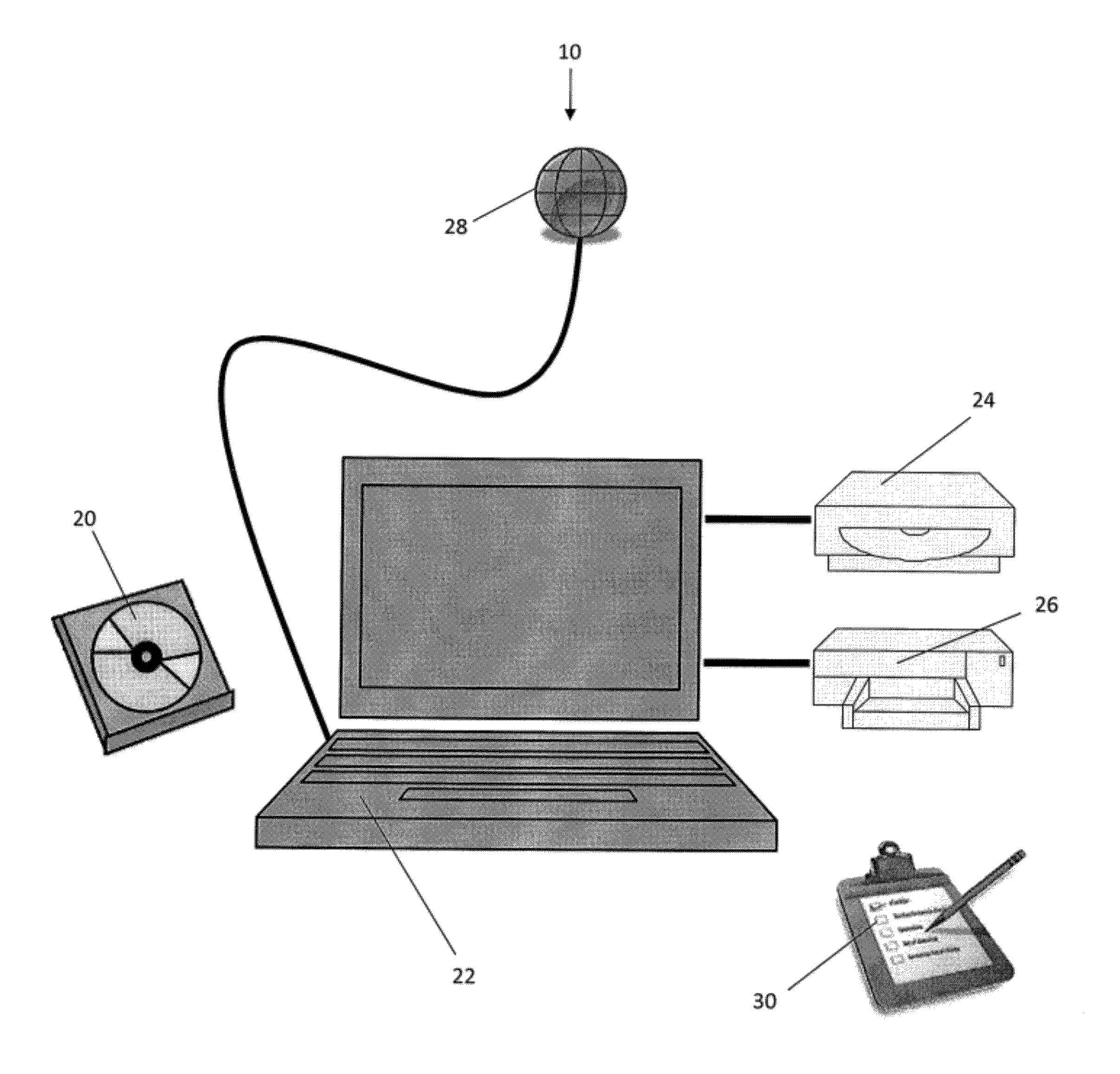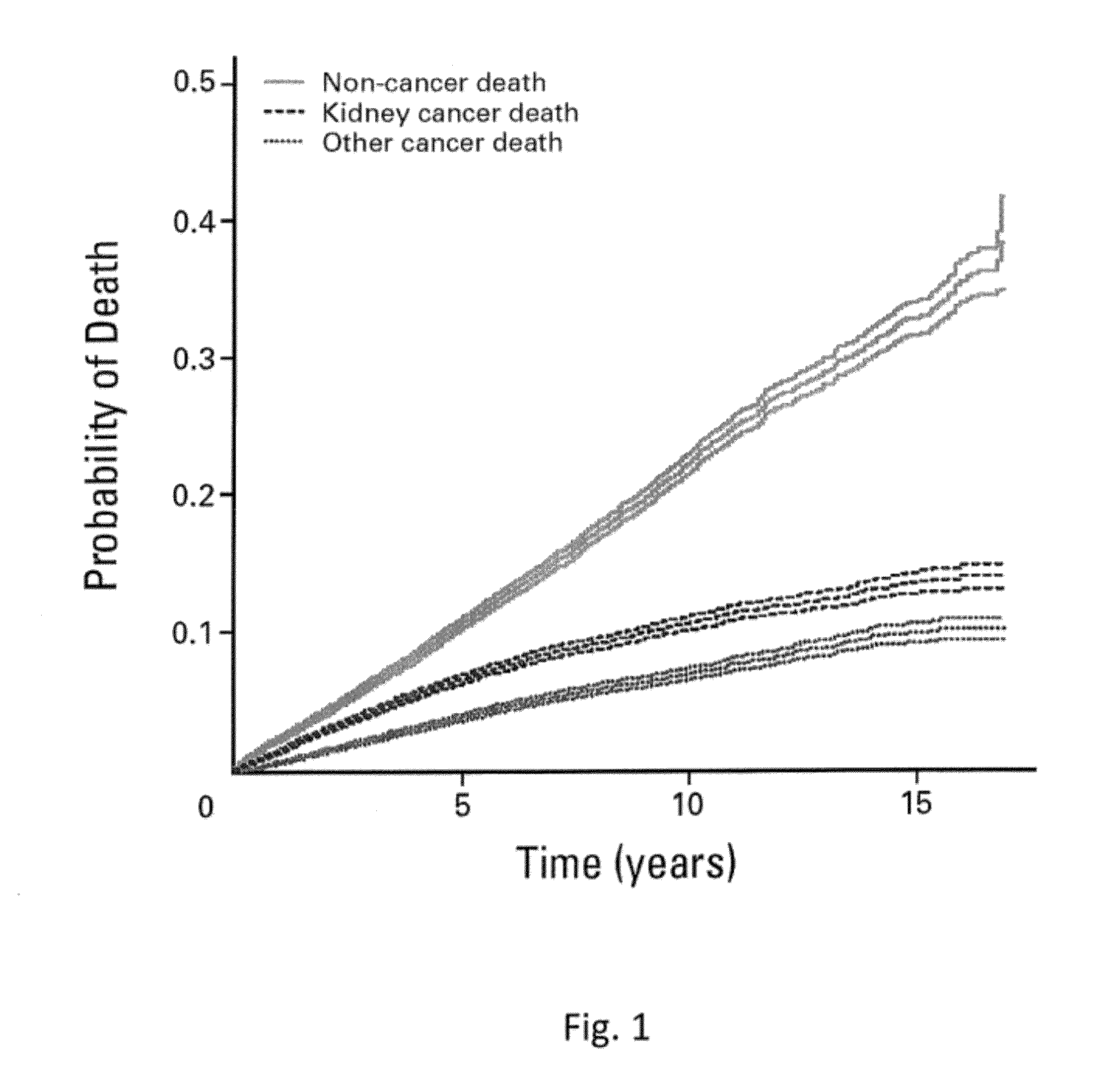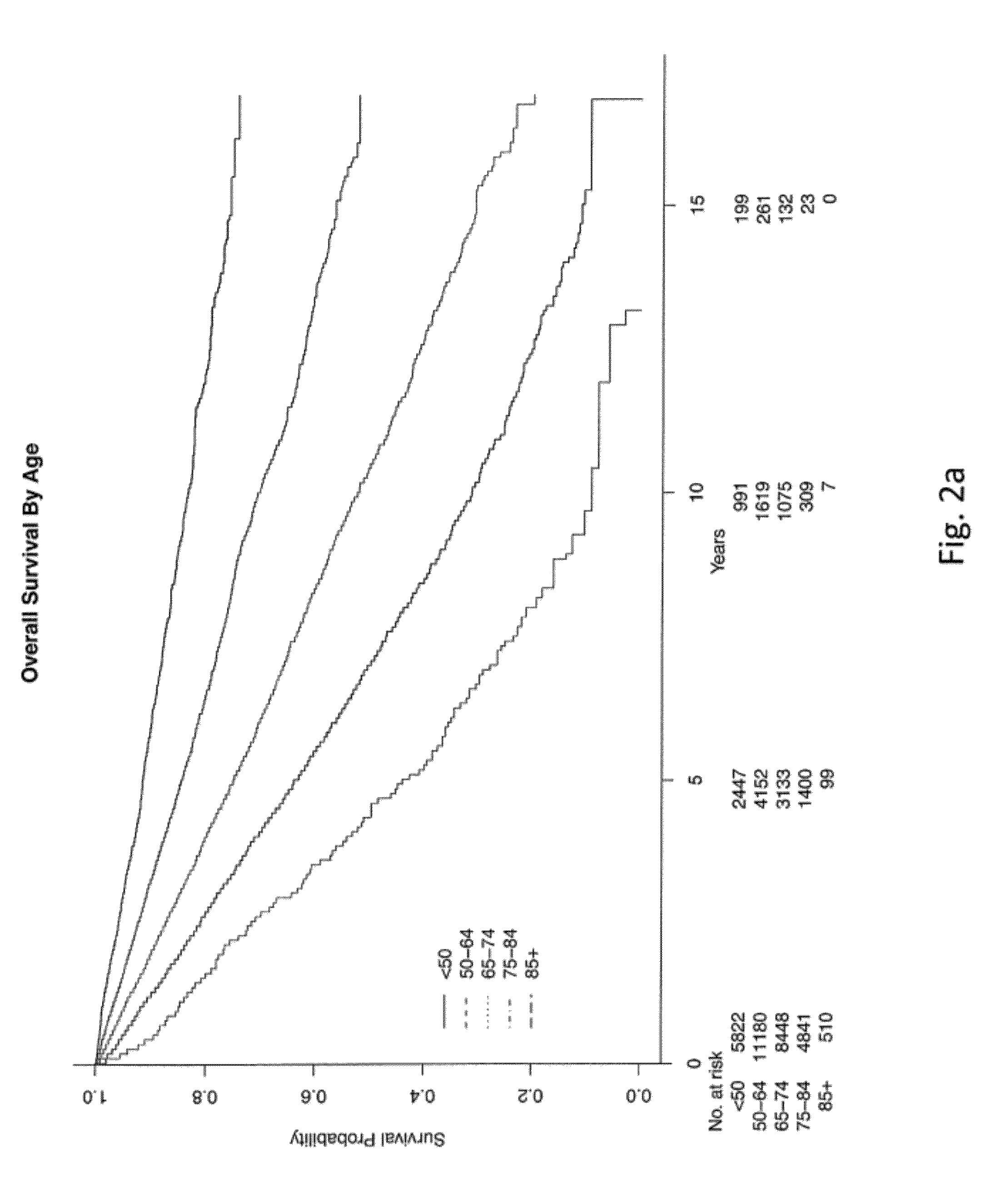Methods for managing cancer patient care
- Summary
- Abstract
- Description
- Claims
- Application Information
AI Technical Summary
Benefits of technology
Problems solved by technology
Method used
Image
Examples
example 1
[0057]Using the Surveillance, Epidemiology, and End Results (SEER) registry (1988 through 2003), 32,677 individuals ≧30 years of age with localized Renal Cell Carcinoma (RCC) RCC ≦20 cm in diameter from 17 geographic regions were identified. Patients (n=1,876) who had SEER codes indicating that either no cancer-directed surgery was performed or it was unknown whether cancer-directed surgery was performed were excluded. The remaining 30,801 patients formed the cohort. The 30,801 patients included only those with common histologic subtype codes: clear-cell (n=27,527), papillary (n=1,494), chromophobe (n=712), adenocarcinoma (n=254), or granular (n=814). To eliminate most childhood renal tumors, individuals younger than 30 years of age were excluded. Also excluded from the analysis were all tumors greater than 20 cm, given their association with metastases, unusual histologies, and local symptoms. Individuals, who under the SEER “Reason for no surgery” field were in...
example 2
Experimental Results
[0063]Kidney Cancer Death and Competing Risk Analysis. The demographics for the cohort of 30,801 patients and probabilities of death are provided in Table 1. FIG. 1 depicts marginal cumulative incidence curves for the three types of death included in the analysis. The majority of the sample were male (61%), white (84%), and had clear-cell histology (92%). The median age at diagnosis was 62 years (range, 30 to 96 years). Median tumor size was 4.5 cm (range, 0.1 to 20 cm by design). More than half the sample (53%) were diagnosed between 2000 and 2003, with 25% diagnosed between 1995 and 1999 and 22% between 1988 and 1994. The median length of follow-up until censoring or death was 3.8 years (range, 0 to 203 months); however, 9,256 individuals had 6 or more years of follow-up, demonstrating the total number of individuals with long-term follow-up to be significant. At last contact, 75% were censored, whereas 25% died, with 7% (2,149) dying from kidney cancer, 4% (1,...
example 3
Discussion
[0068]These studies demonstrate that patients with localized node-negative kidney cancer not only have an excellent 5- (96%) and 10-year (93%) cancer-specific survival, but a significant 5- and 10-year overall risk of death from other cancer deaths (7%, 11%) and non-cancer-related mortality (11%, 22%).
[0069]This multivariable model is based on more than 30,000 patients from the SEER database who underwent surgical treatment for localized RCC. The nomogram affords the clinician and patient an opportunity to quantitate three competing 5-year mortality outcomes: (1) death from RCC, (2) death from other (non-RCC) malignancies, and (3) noncancer death. The value of this model is its ability to help guide management decisions in the preoperative setting. The model may have utility both for clinical and research purposes. Risk estimates provided by the model can be extremely useful in patient counseling, especially when discussing less aggressive treatment options with elderly or...
PUM
 Login to View More
Login to View More Abstract
Description
Claims
Application Information
 Login to View More
Login to View More - R&D
- Intellectual Property
- Life Sciences
- Materials
- Tech Scout
- Unparalleled Data Quality
- Higher Quality Content
- 60% Fewer Hallucinations
Browse by: Latest US Patents, China's latest patents, Technical Efficacy Thesaurus, Application Domain, Technology Topic, Popular Technical Reports.
© 2025 PatSnap. All rights reserved.Legal|Privacy policy|Modern Slavery Act Transparency Statement|Sitemap|About US| Contact US: help@patsnap.com



